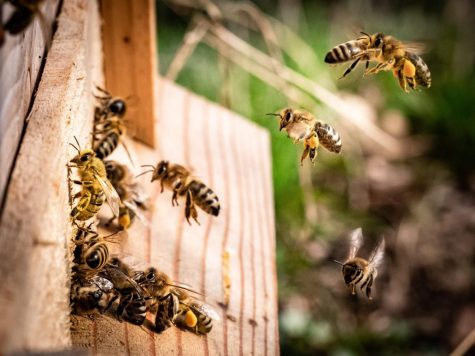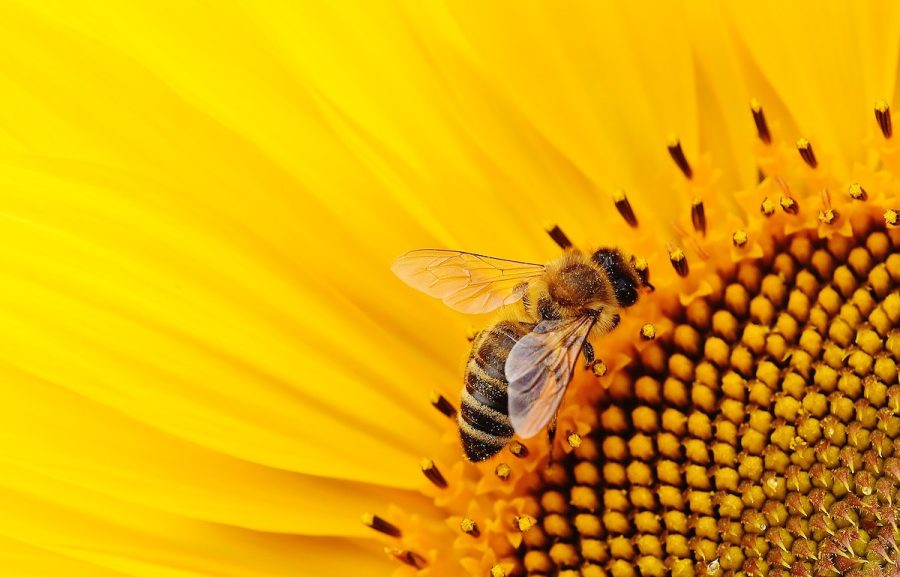Save the Bees?
You may have heard in recent years about the decline of bees around the globe, which can lead to things like a mass decline in global food production. But, in recent years, things have changed.
First, it is important to know why bees and other pollinators are vital to human life, and what happens if bees do go extinct. Bees are the most important pollinators in our ecosystem. Bees transfer pollen from the male part of the plant to the female part of the plant. Although this process of pollination seems very simple, it is responsible for 80% of our crops, according to the U.S. Department of Agriculture. That is worth about $200 billion in agricultural revenue. Not only would the disappearance of bees be detrimental to the economy, it would also be difficult to sustain the global population. It would also be destructive to food chains that support our ecosystem.
The disappearance of bees would have massive effects on crops, people, and food. For example, nuts are a vital crop used in the agricultural industry. Almond hulls are used as feed for cattle and chicken in farms. Without bees to pollinate almonds, the lack of these almond hulls would lead to declining livestock, which will lead to declining cheese, egg, and milk production. Almonds are also used in many other foods. Also, the disappearance of bees would affect many other food webs in a similar manner. We would lose many dairy products from the lack of alfalfa, we would lose many fruits and vegetables, and we would also lose many other food products like coffee and some chocolates. All of this means that without bees, our diets will primarily consist of corn, wheat, and rice food products, because they do not rely on bees for pollination.
 In the past 10-20 years, a phenomenon known as colony collapse disorder (CCD) occurred in several locations around the world, where entire colonies of honeybees disappeared. CCD is caused by multiple factors, such as the improper use of pesticides before regulations were tightened, and other causes such as harmful pathogens and climate change. CCD has sparked an international debate about the use of pesticides and other harmful practices, and regulation generally has tightened in order to protect bee populations, and the decline of bee populations has slightly slowed. For example, the United States currently has thriving bee populations compared to the past several years, but some worry still exists about the long-term preservation of pollinators in the United States as well as other countries.
In the past 10-20 years, a phenomenon known as colony collapse disorder (CCD) occurred in several locations around the world, where entire colonies of honeybees disappeared. CCD is caused by multiple factors, such as the improper use of pesticides before regulations were tightened, and other causes such as harmful pathogens and climate change. CCD has sparked an international debate about the use of pesticides and other harmful practices, and regulation generally has tightened in order to protect bee populations, and the decline of bee populations has slightly slowed. For example, the United States currently has thriving bee populations compared to the past several years, but some worry still exists about the long-term preservation of pollinators in the United States as well as other countries.
To sum it up–in the past few decades, fear has spread about the potential mass disappearance of bee colonies. But, in the United States at least, bee populations have been thriving lately, but there is still some worry about the danger of mass bee disappearance, which would lead to the disappearance of many foods and other products.

Cody is a senior and is actively involved in Keynote, NHS, Robotics, and Yearbook. He is the co-editor of Yearbook in addition to being Co-Editor...

